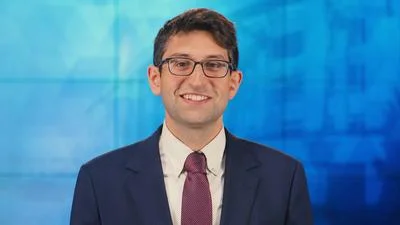WASHINGTON, DC - The Energy and Power Subcommittee, chaired by Rep. Ed Whitfield (R-KY), today continued its EPA oversight with a hearing on “State Perspectives: Questions Concerning EPA’s Proposed Clean Power Plan." The panel heard from state regulators regarding questions and concerns about EPA’s proposed plan to limit carbon dioxide from state electricity systems, including major implementation challenges.
“Unlike EPA, state-level officials are the ones who are held accountable to their consumers and businesses, and bear the responsibility of keeping electricity affordable and reliable. They have to deal with all the implementation challenges, including resolving the conflicts between the Clean Power Plan and their own state laws and regulations. That is why their views on the Clean Power Plan are so vitally important and why this hearing is critical to gathering the perspective necessary to understand the challenges confronting the states," said Chairman Whitfield.
EPA has touted the proposed Clean Power Plan as a “flexible" approach to address carbon dioxide emissions by setting mandatory state targets based on “building blocks" involving actions across a state’s entire power sector. As explained by several of today’s witnesses, EPA’s “building blocks" and overall emissions targets are based on unworkable and unrealistic assumptions about how state and regional electricity systems operate in the real world. The panel raised a broad array of technical, feasibility, reliability, and cost issues and concerns associated with the proposal.
Kenneth Anderson, Public Utility Commissioner of Texas testified that EPA’s rule as proposed “raises substantial questions around fairness (EPA proposes that Texas should account for 18% to 25% of national CO₂ reduction), cost, implementation alternatives, system reliability and whether compliance is even physically possible, at least within the timelines proposed by the EPA." He explained that EPA’s building blocks could actually work “cross purpose" because they do not properly account for the substantial investment Texas has made in renewable energy. “‘Building block’ 3 assumes that the Texas renewable energy production can increase to a level above the minimum load in the Texas ERCOT market. Putting aside the timing, cost, and reliability issues, relying on this compliance alternative will likely shut down all other generation during certain times of the day, including nuclear. This creates a paradox. Texas cannot achieve both a 70% capacity factor for gas combined cycle plants and 20% renewable energy production without increasing CO₂ emissions," said Anderson.
Henry Darwin, Director of the Arizona Department of Environmental Quality, explained,
“By our calculations, switching from coal to natural gas by 2020 is the only ‘building block’ available to Arizona for meeting EPA’s proposed goal. As we have explained to EPA, this implementation issue is at odds with their stated intent that states be provided flexibility amongst the building blocks in achieving the goals. Furthermore, committing to achieve over 75% of the second most stringent, final goal in the nation by 2020 would be putting Arizona’s energy reliability and public health at risk, which EPA also clearly does not intend by its proposed rule."
Montana Public Service Commissioner Travis Kavulla also raised concerns about EPA’s flawed assumptions and unreasonable targets, stating, “The much-heralded flexibility that the proposed EPA rule provides to states is a meaningless concept, if the underlying goal-a number which is inflexible-has been calculated using generic assumptions that are misleading or false when applied to the facts of a specific state, in a specific part of the transmission grid. The goals established for states must be premised on reasonable, adequately demonstrated measures." Kavulla also expressed concern that no gird reliability analysis has been conducted for the Western region, and analysis will not be completed until after the public comment period for the rule is closed. He added, “The EPA’s rapidly approaching October comment deadline must be extended to provide sufficient time for reliability analysis to be conducted, and many parts of the rule must be reworked considerably if state goals are to be founded on a realistic assessment of what is achievable in a state."
Thomas Easterly, Commissioner of the Indiana Department of Environmental Management, highlighted the negative effects EPA’s proposal would have on his and other states’ economic competitiveness, jobs, and consumers as well as global emissions. “Under this proposal the total cost of the products produced in the U.S. will need to increase, eroding our international competitiveness and resulting in the loss of manufacturing jobs in Indiana and across the nation. When these businesses close, U.S. emissions will increase as our businesses move to areas with less efficient and more carbon intensive energy supplies," said Easterly. “I have come to the conclusion that this proposal will cause significant harm to Hoosiers (and most residents of the U.S.), without providing measurable offsetting benefits. … Increases in energy costs hit the poor, elderly and most vulnerable in our society first. At a time when Indiana is doing all that it can to grow its economy and create jobs, the EPA’s proposal creates the very real possibility that increased energy costs will slow our economic progress and raise people’s utility bills."
Full committee Chairman Fred Upton (R-MI) concluded, “If this proposed rule becomes final, it will be bureaucrats in Washington who will be micromanaging electricity production and use in each state. It is difficult to imagine this new level of federal control as anything other than bad news for affordable electricity prices and jobs. And it may be even worse news for electric reliability, a subject that is the primary jurisdiction of agencies other than EPA, as FERC recently confirmed at our last hearing."
Today’s hearing was the subcommittee’s third hearing examining the implementation and impacts of EPA’s proposed Clean Power Plan. In June, the subcommittee held a hearing featuring testimony from EPA’s Acting Assistant Administrator for Air and Radiation Janet McCabe. In July, the subcommittee heard FERC Commissioners’ perspectives on EPA’s proposed plan.





